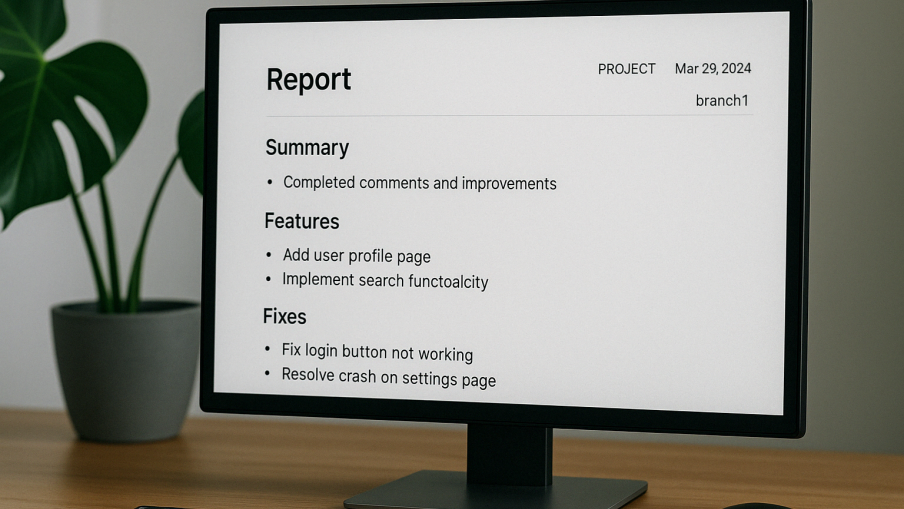For many software agencies, reporting is the most painful part of the development cycle.
Client updates, sprint summaries, and weekly progress reports often eat up hours of valuable developer and project manager time. One mid-size agency—let's call them CodeBay Studio—decided to fix that with automation.
In this case study, we’ll explore how they integrated Gitloom into their workflow and saved 6 hours a week—without sacrificing transparency or quality.
The Problem: Manual Reporting Burnout
Before Gitloom, CodeBay’s project managers spent every Friday compiling:
Pull request titles
GitHub commit messages
Manual summaries of what changed
Categorized updates for clients (Features, Fixes, Improvements)
Custom PDF exports or Notion updates
Even with templates, this process took about 1 to 1.5 hours per project, every single week.
With five active projects, that’s 6+ hours of non-billable work.
The Solution: Integrating Gitloom
The team heard about Gitloom from another agency and gave it a shot. Within one week, they had it fully integrated:
GitHub connected with Gitloom
Projects and branches mapped
AI summaries and PR categorization enabled
Automatic weekly reports scheduled every Friday at 3 PM
Now, instead of writing reports from scratch, PMs just review the AI-generated report and make minor tweaks if needed.
The Impact: Time Saved, Clients Happy
Here’s what changed after Gitloom was introduced:
⏱ 6 hours/week saved across 5 projects
📄 Reports became more consistent and structured
🤝 Clients started replying more often (they finally understood the updates!)
😌 Developers were no longer interrupted for “What changed in this sprint?” questions
The biggest surprise? One of their clients asked:
“Did you hire a technical writer? These reports are so clear now.”
Nope. Just Gitloom doing its thing.
Bonus: Improved Internal Alignment
Besides helping clients, Gitloom also improved internal communication. Team members started referencing the reports in standups, retrospectives, and sprint planning. The AI-generated summaries became a shared understanding of what got done and what didn’t.
Final Thoughts
For CodeBay Studio, Gitloom wasn’t just a time-saver—it became a core part of their delivery process. They now include Gitloom-powered reports as a feature in their onboarding deck for new clients.
If your team is drowning in manual reporting, you don’t need more templates. You need automation.
Try Gitloom and get your Fridays back.

